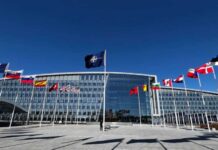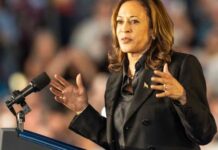In a diplomatic dance that could rival the most intricate tango, President Donald Trump and Japanese Prime Minister Shigeru Ishiba recently announced new U.S.-Japan trade initiatives. The backdrop? A $68 billion U.S. trade deficit with Japan that Trump is keen to slash, possibly with the sharp edge of tariffs. But let’s not get ahead of ourselves.
During their meeting at the White House, Trump expressed his desire to reduce this trade imbalance, emphasizing that while tariffs are on the table, he hopes for an amicable resolution. ‘I think it will be very easy for Japan,’ Trump remarked confidently. ‘We have a fantastic relationship. I don’t think we’ll have any problem. They want fairness also.’ It’s the kind of optimism that makes you wonder if he’s ever tried to assemble IKEA furniture without the manual.
Prime Minister Ishiba, on his whirlwind trip to Washington, was all smiles and nods, acknowledging Japan’s significant investments in the U.S. and expressing a desire to invest even more. He even praised Trump’s resilience, referencing the president’s recovery from an assassination attempt at a July campaign rally. It’s always good to butter up your host, especially when potential tariffs loom large.
But let’s dig a little deeper. Trump has been vocal about his dissatisfaction with trade imbalances, not just with Japan but globally. He’s hinted at imposing ‘reciprocal’ tariffs, aiming to match the tariffs that other countries impose on U.S. goods. ‘I’ll be announcing that next week, reciprocal trade, so that we’re treated evenly with other countries,’ Trump stated. It’s a bold move, reminiscent of a high-stakes poker game where the president is ready to call everyone’s bluff.
Now, about those tariffs. The U.S. has already slapped a 10% levy on Chinese imports, prompting China to retaliate with its own tariffs. The potential for a multi-front trade war is real, and Japan could be next in line. Trump hasn’t ruled out the possibility of imposing tariffs on Japanese exports if the trade deficit isn’t addressed. It’s a classic case of ‘do as I say, or face the consequences.’
In an attempt to appease the U.S., Japan has shown interest in importing more American liquefied natural gas (LNG). Trump announced that Japan would soon begin importing a record amount of new shipments of American LNG. He also mentioned a joint venture linked to Alaska oil and gas. ‘We’ve opened the sale of LNG immediately… Japan in particular, we’re very happy that they’re going to start immediately,’ Trump said. It’s a win for American energy producers, but one has to wonder if it’s enough to balance the scales.
Prime Minister Ishiba, speaking through an interpreter, expressed Japan’s interest in importing bioethanol, ammonia, and other resources at stable prices. It’s a step in the right direction, but whether it will satisfy Trump’s demand for a more balanced trade relationship remains to be seen.
In the end, this meeting between Trump and Ishiba is just the latest chapter in the complex narrative of U.S.-Japan trade relations. Both leaders have their agendas, and while they publicly express optimism and mutual respect, the underlying tensions are palpable. The threat of tariffs hangs in the air, a constant reminder that in the world of international trade, it’s every nation for itself. As Trump prepares to announce his ‘reciprocal’ tariffs, the world watches, waiting to see who will blink first in this high-stakes game of economic chicken.















